
It is not your environment;
it is not your history;
It is not your education or ability.
It is the quality of your mind
that predicts your future.
- Dr. Benjamin MaysHappy New Year!
Join me in this unique forum to discuss pressing issues in technology, business, education, and current events. We'll explore topics of interest to all.
One of the cruelest aspects of slavery was the way it wrenched apart black families, separating husbands from wives and children from their parents. It is ironic, to say the least, that now, nearly a century and a half after the Emancipation Proclamation, much of the most devastating damage to black families, and especially black children, is self-inflicted.The above quote is by Bob Herbert, a popular columnist for the New York Times. He writes with precision, and he's never afraid to step outside the box of political correctness.
Most black people are not poor. Most are not criminals. Most are leading productive lives. The black middle class is larger and more successful than ever. But there are millions who are still out in the cold, caught in a cycle of poverty, ignorance, illness and violence that is taking a horrendous toll.
 Taking a closer look at 'silent victimization'
Taking a closer look at 'silent victimization'One girl in kindergarten, who was not in my class, came to school with a black eye. Her sister, who was in 4th grade, came to school with a broken nose. Mom spent time in jail, then was released and the girls were back with her. It's just a matter of time before it happens again.
Another story: I had a child in my class who was extremely intelligent (reading at a second/third grade level), but who was absent frequently, would crawl into classroom closets, and purposely sabotage her work. She eventually told me that her mother's boyfriend was beating up her mom, and even broke her nose (I saw the mom's broken nose, but she told me she was 'in a car accident'). The girl was constantly living in fear. They ended up moving to Las Vegas.
 What a teacher should know
What a teacher should know Reflecting upon African ancestry, unity and values
Reflecting upon African ancestry, unity and values


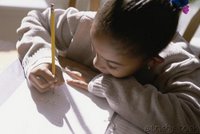 Low-income and children of color shortchanged in many states
Low-income and children of color shortchanged in many states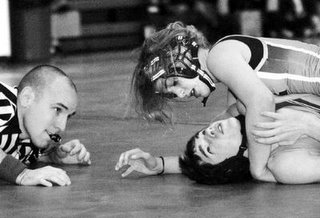
 Court ruling won't stop the battle, experts say
Court ruling won't stop the battle, experts say How teachers can make a difference
How teachers can make a difference Educational value of toddler tech toys questioned
Educational value of toddler tech toys questioned
 Innovative program prepares children for kindergarten
Innovative program prepares children for kindergarten Student gets a rude awakening - suspension
Student gets a rude awakening - suspension Science standards are too low in many states, officials say
Science standards are too low in many states, officials say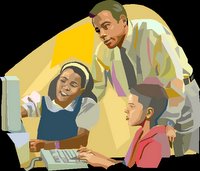 In pursuit of academic victories
In pursuit of academic victories Funding postsecondary education
Funding postsecondary education Survivors recall chilling moments that pulled the U.S. into World War II
Survivors recall chilling moments that pulled the U.S. into World War II
 Why chores are good for our kids
Why chores are good for our kids True Education Reform
True Education ReformWhether we accomplish those goals will impact our national security, our ability to compete globally and field an able military, the report says. That alone should be incentive to take on these tough issues.
 The Quick Fix
The Quick Fix No more "sugar and spice"
No more "sugar and spice" Are children in the U.S. forced to grow up too quickly?
Are children in the U.S. forced to grow up too quickly?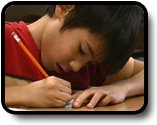 High concentration of limited-English proficient students challenges implementation of NCLB
High concentration of limited-English proficient students challenges implementation of NCLB Standards for middle and secondary school literacy coaches
Standards for middle and secondary school literacy coaches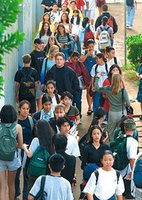 Achievement rises when students are given a voice
Achievement rises when students are given a voice
 Do contracts reflect wasteful spending?
Do contracts reflect wasteful spending?

I didn't see anything shocking. I actually thought he (the chicken) was really cute. It was strange because he was so small but sounded like a 33 year old man. The movie twisted into something unexpected about aliens from outer space, which my daughter seemed confused about. She didn't know whether she should be scared or laughing. It definitely wasn't Cinderella.Thanks, Jaimie.
I agree with Brea, it is a fine line. On the one hand, I give my children credit for being intelligent enough to distinguish between silly fantasy violence and images of actual aggression. I'll even let my kids see violence, as long as it has a moral context. I think kids should know that violence in self-defense and defense of others is sometimes necessary and justifiable. I think it actually gives kids a sense of security to know that although [there] are bad people in the world who do bad things, we have ways of protecting society against them. I draw the line at gratuitous sexuality of any kind though. There's no conceivable reason for a [child] to be exposed to that.
As parents, we owe it to our children to do our homework to the best of our ability, to insure that they are being educated and entertained with images that are healthy. Otherwise we risk them being programmed and misinformed with unhealthy input. Sometimes on a subliminal level. Negative input leads to negative output. We want to give our kids a chance to be their best.

Given the many challenges and time restraints facing today's families, it makes sense for school to redefine or expand their definitions for parental involvement. More and more parents are working long hours. For those parents working second shift (3 p.m. - midnight) or rotating shifts, it's tough getting time off for parent-teacher conferences or other evening school events.
Many parents don't realize that they have the right to request a meeting with the teacher at an alternative time - before school, during the teacher's planning period or immediately after school. Another way for parents and teachers to keep communication lines open is to exchange messages by email or to have brief phone conversations at a mutually agreeable time.
Remember two thoughts. One is a quote from a famous philosopher; the other is a proverb:
Do not train youth to learn by harshness, but lead them to it by what amuses their minds. Then you may discover the peculiar bent of the genius of each.
-- Plato
Not to know is bad; not to wish to know is worse.
-- Nigerian Proverb
 Are G-rated movies going to far?
Are G-rated movies going to far? Muslims to observe the "feast of fast breaking"
Muslims to observe the "feast of fast breaking"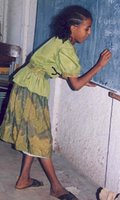 Exploring the impact on academic achievement
Exploring the impact on academic achievement Linking teacher salaries to student achievement
Linking teacher salaries to student achievement Senate passed resolution Thursday; House expected to follow suit Friday
Senate passed resolution Thursday; House expected to follow suit Friday